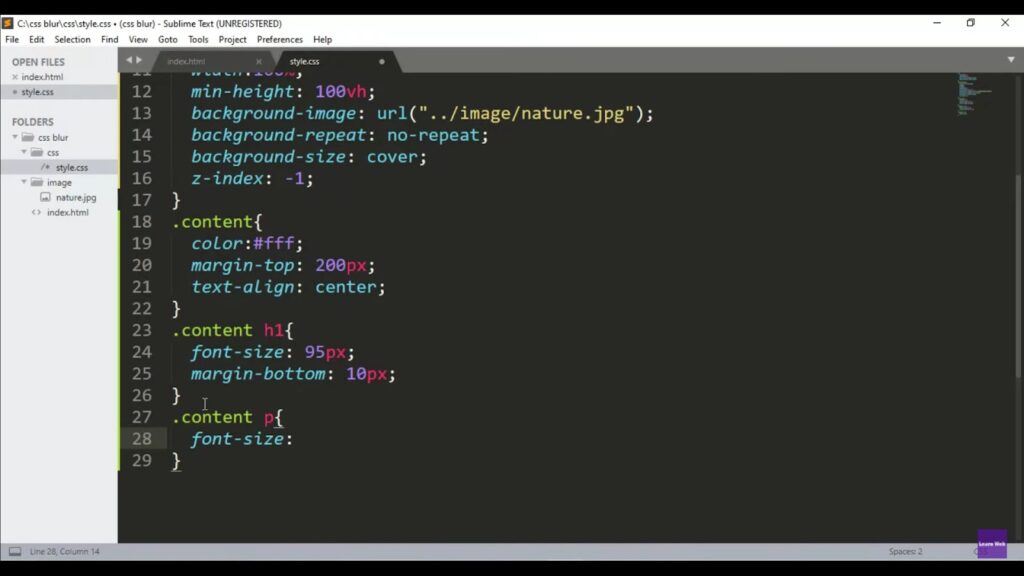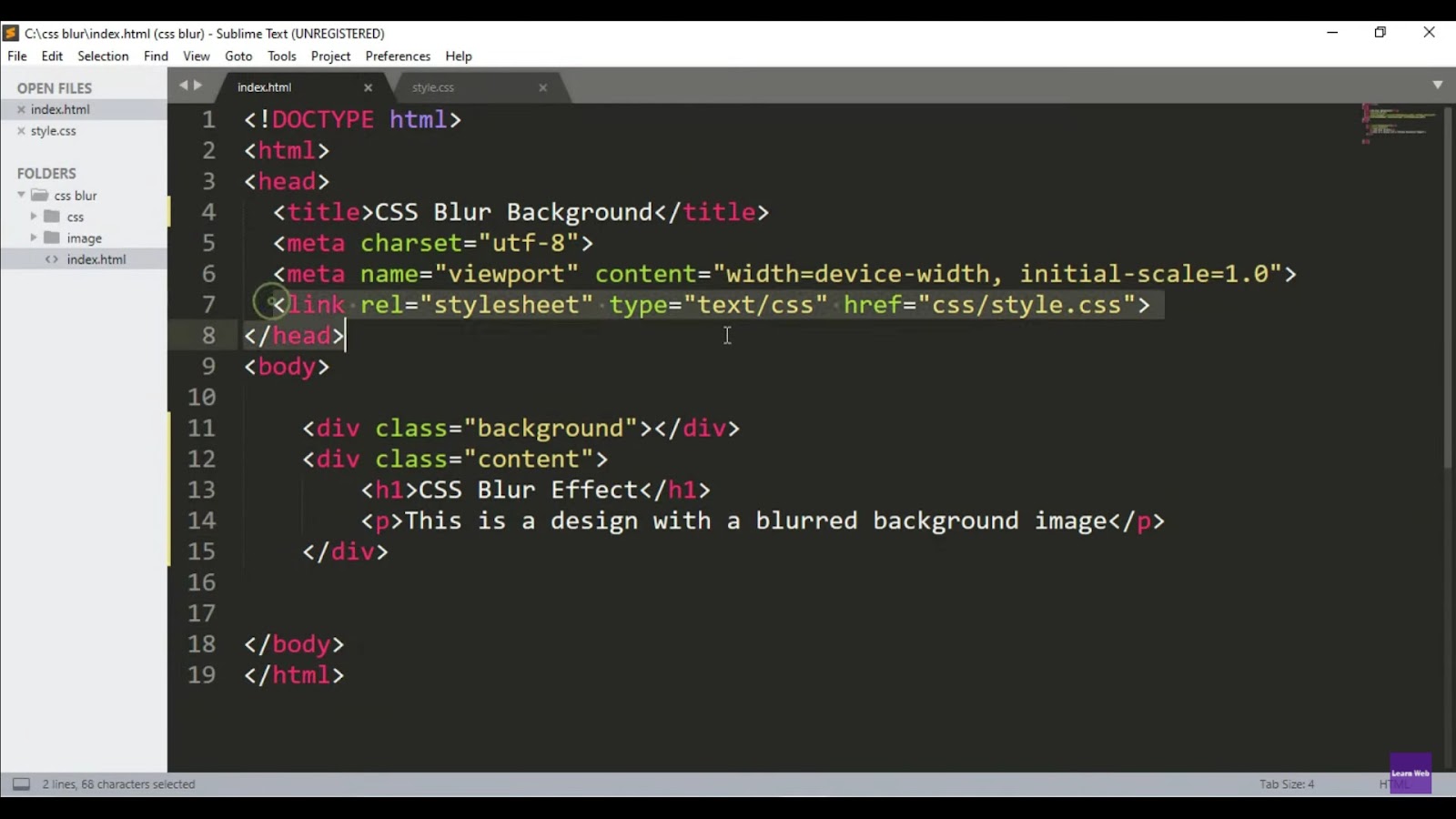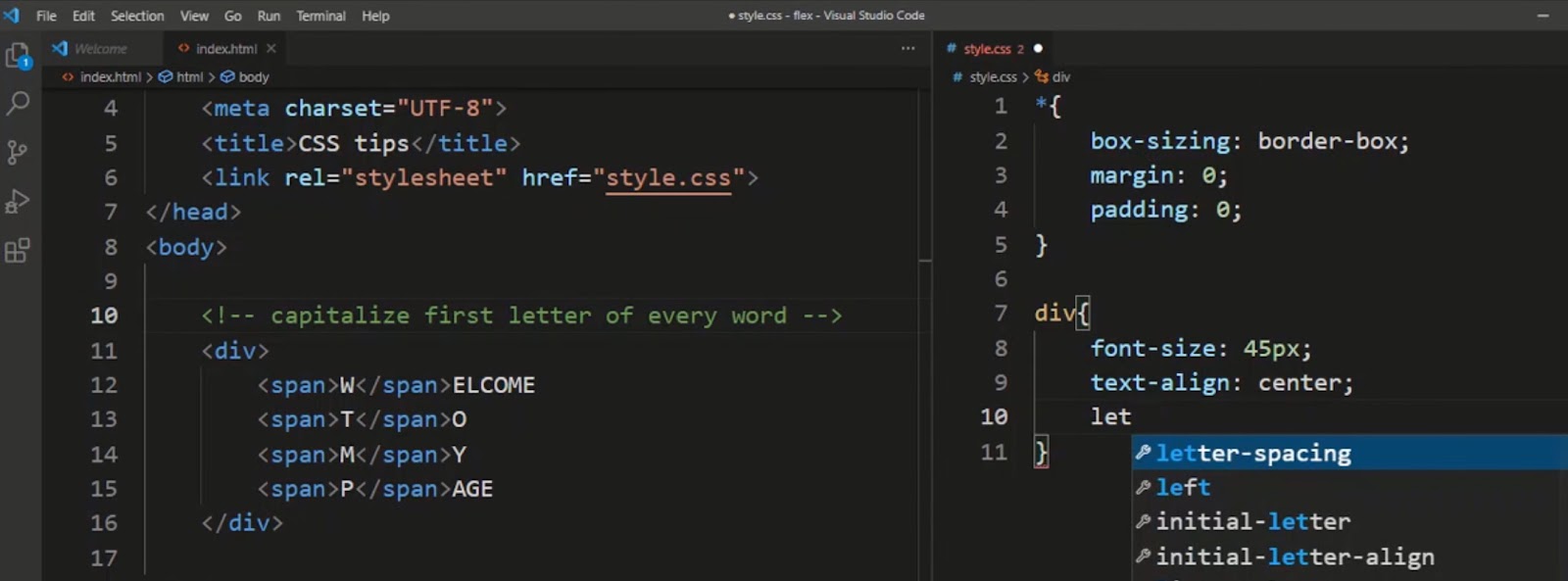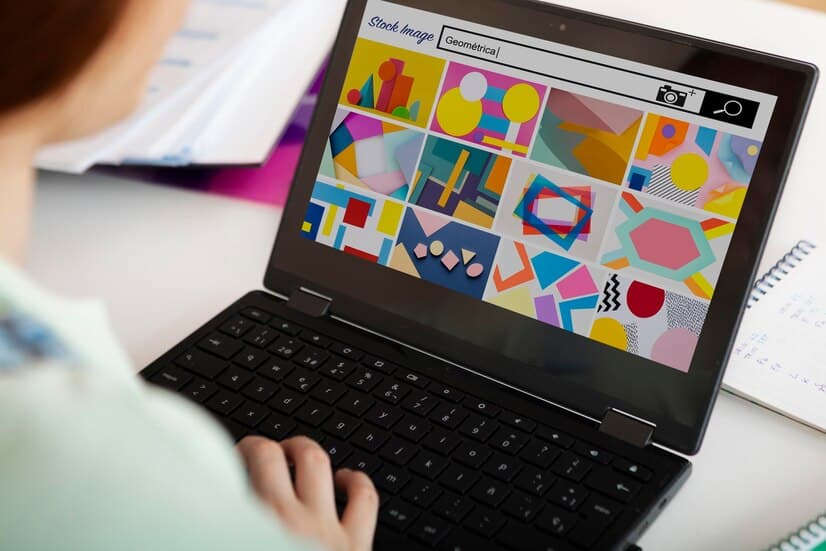Within the domain of web design, the aspect of aesthetics assumes a paramount role in not only captivating audiences but also in enriching the user experience. Amidst the array of techniques accessible, CSS background blur effects emerge as a potent instrument for instilling depth, ambiance, and visual allure into web interfaces. Whether one aspires for a sleek contemporary appearance or a whimsical, otherworldly ambiance, mastering the intricacies of background blurring has the potential to elevate one’s design acumen significantly.
Embedded within this extensive manual, we shall delve deep into the nuances of CSS background blur effects, unraveling their adaptability, implementation methodologies, and innovative utilities. From subtle augmentations to commanding focal points, we shall unveil the clandestine methods that lead to the creation of breathtaking visual effects, ones that ensnare and enrapture users. Whether you are an adept web developer yearning to broaden your repertoire or a novice eager to explore the horizons of CSS, this guide stands as your compass, navigating you through the realms of background blurring and empowering you to harness its complete potential within web design.
Delving Deep into the Backdrop-Filter Property
The backdrop-filter property stands as a formidable tool in the arsenal of web design, granting the capability to apply striking graphical effects like blur, brightness, and color manipulations on the area situated behind an HTML element. It is, without a shadow of a doubt, a versatile tool that can craft countless visually pleasing effects, boosting the aesthetics of any webpage, and enhancing its overall design.
This CSS property serves to primarily magnify the User Interface (UI) and User Experience (UX) quality of any website. By using backdrop-filter judiciously, developers can endow web pages with enriched depth perception, sharpened visual focus, and an enhanced sense of visual intrigue. An illustrative example of its utility would be applying a blur effect on a background image situated beneath a text box, thereby improving text’s readability and successfully catching the user’s attention instantly.
- Create layers of depth by contrasting blurred and clear elements;
- Make use of colour shifts to indicate interactivity or change of status;
- Increase readability of text over complex backgrounds with a subtle blur effect.
Expanding backdrop-filter property or any other CSS property is no longer a daunting task thanks to advanced tools like Purecode.ai. This intuitive tool aims to flatten the learning curve and empower developers and designers alike to push the boundaries of their web development projects.
So why the delay? Kickstart the journey with Purecode.ai and elevate your web development projects several notches higher!
- Leverage Purecode.ai for efficient implementations of CSS properties.
- Learn, implement, and master new skills swiftly with Purecode.ai’s user-friendly interface.
- Embrace Purecode.ai’s comprehensive learning resources to stay updated with recent advancements in web development.
An Exemplary Application of backdrop-filter
Below is a practical instance of implementing the backdrop-filter property in CSS for a blur effect. This code demonstrates how the backdrop-filter: blur() function can be employed to blur a background image.
/* Code snippet to implement a 5px blur effect */
.effect-blur {
backdrop-filter: blur(5px);
}Following is the HTML portion of the code which makes use of the above defined CSS class:
<div>
<img src="beautiful-landscape.jpg"/>
<img src="beautiful-landscape.jpg" class="effect-blur"/>
</div>In the HTML code snippet given above, there are two images. The first image is the original one, and the second image, which includes the class effect-blur, will have the blur effect applied.
Upon successful execution, this code will project two images — the original picture, and the same picture but with a blur effect of 5 pixels.
Remember, the backdrop-filter property can bring a visually appealing depth to images and help the overlaid content stand out. It also proves to be a valuable tool to improve website user-friendliness, readability, and overall visual experience. Learn and explore more about ‘backdrop-filter’ and other CSS properties to enhance your web development skills and projects.
Enhancing Visual Depth: CSS Background Image Blur
Backdrop-filter property in CSS is a powerful tool for implementing a basic background blur effect onto an HTML element. This is done by employing the blur() function of the said property. The blur() applies a Gaussian blur algorithm to the specific element that it’s applied to, enabling creation of blurry background images using CSS.
Here is the syntax illustrated:
<div class="background_effect">
<div class="message_box">
This text box has a 10px backdrop blur.
</div>
</div>In this mentioned HTML snippet, there are two divisions (div). The outer div has a class called background_effect, and the inner div is given the class message_box.
Moving on to the CSS part:
.background_effect {
background-image: url("image.jpg");
}
.message_box {
backdrop-filter: blur(10px);
}This CSS snippet specifies that the element with the class background_effect would have a background image named ‘image.jpg’. Further, the element with the class message_box will apply a blur effect of 10 pixels to the background. In effect, any content inside message_box would be clearly visible, while the background image would have a blur of 10 pixels, creating a stunning depth effect to the entire webpage.
In essence, the backdrop-filter: blur() property can immediately elevate the visual aesthetics of a webpage. It’s an excellent tool to enhance readability of overlaid text, contributing to the enhanced user-interface and user-experience of a website. Mastery of such CSS properties and their creative application can be a game-changer in web development projects.
Modulating the Degree of Blur for a Unique Visual Impact
The degree of blur applied through the backdrop-filter property is directly dependent on the value specified in the blur() function. It grants the freedom to the developer to modulate the blur intensity—in other words, the level of diffuse blend the backdrop has with the foreground.
The blur value can be any positive integer, followed by a length unit. The higher the value, the stronger the blur effect is applied, rendering the background increasingly diffuse and subtle.
Here’s an illustrative HTML and CSS code snippet below:
<div class="blur_background">
<div class="intense_blur">
Experience the depth with a 100px blur!
</div>
</div>
.blur_background {
background-image: url("castle.jpg");
padding: 25px;
}
.intense_blur {
backdrop-filter: blur(100px);
padding: 15px;
color: white;
}In the above sample, the CSS code applies a background image ‘castle.jpg’ to the div with the class blur_background. For the div class intense_blur, a ‘backdrop-filter: blur(100px)’ applies a strong 100px blur effect to the background image, giving a more intensive depth to the webpage.
By simply manipulating the blur() value, the developer can experiment with various depth and blurring effects, thereby opening up endless possibilities for creating visually captivating web pages. Experimenting with varying blur intensities can help achieve desired aesthetic outcomes and significantly enhance the intuitive user interaction with the webpage.
Energizing Visuals with Multiple Filters
The ‘backdrop-filter` property in CSS offers the flexibility to add multiple filters simultaneously, paving the way for original and customizable effects. By concatenating several functions in the property, web developers can create a multitude of layered effects and add a unique aesthetic touch to the overall web design.
To apply multiple filters, each function must be spaced within the property, as shown in the example below:
<div class="enriched_background">
<div class="composite_effects">
Feel the depth with 30px blur and 200% brightness!
</div>
</div>
.enriched_background {
background-image: url("cityscape.jpg");
padding: 20px;
}
.composite_effects {
backdrop-filter: blur(30px) brightness(200%);
padding: 10px;
color: black;
}In the provided example, the div with class enriched_background gets a background image named ‘cityscape.jpg’. The div with class composite_effects applies two filters: a blur of 30 pixels and a brightness increase of 200%. This results in a blurred background image with enhanced brightness, crafting a unique, vibrant depth effect on the webpage.
The ability to layer multiple filters offers a vast landscape open to developers’ creativity. This property’s power enables the crafting of intricate and engaging visuals, underlining the importance of mastering such properties in the realm of web development. By pushing the boundaries of what is possible with backdrop-filter, developers can create not only visually pleasing but also highly engaging user interfaces. Remember, the key lies in understanding the basics, experimenting with values, and boldly pushing the creative envelope.
Exploring Beyond Blurring: Delve into Color Shifting, Contrast Enhancement, and More CSS Filters
No doubt, the blur effect comes packed with an aesthetic appeal. But CSS’s backdrop-filter property isn’t limited to it. This property brings along a host of other filters ranging from color shifting, contrast adjustments, and more. These tools offer a plethora of visual effects that can rival, and sometimes even surpass, the visual appeal of the blur effect.
Harnessing the Power of Color Shifting with hue-rotate() Filter Function
Color shifting is achievable using the power-packed hue-rotate() CSS filter function. This nifty property has the ability to rotate the hue of background colors, empowering you with the capability to alter the overall color scheme of your website’s background.
Consider this illustrative example:
<div class="background">
<div class="box">
90deg Hue-Rotate
</div>
</div>
.background {
background-image: url("paris.jpg");
}
.box {
backdrop-filter: hue-rotate(90deg);
}In this example, the hue-rotate filter function tweaks the site’s background image’s hues by 90 degrees, imparting a distinct color shift to the original image.
Contrast Adjustment: A Game of Shadows and Highlights with contrast() Filter Function
Contrast is another crucial aspect of website aesthetics. With the contrast() filter function, designers can adjust the degree of difference between the lightest and darkest areas of an image. By refining the image’s contrast, one can make colors either more pronounced or more uniform, depending on the desired effect.
Take a look at the following example:
<div class="background">
<div class="box">
200% Contrast
</div>
</div>
.background {
background-image: url("paris.jpg");
}
.box {
backdrop-filter: contrast(200%);
}In this example, the contrast() filter function is used to double the contrast of the site’s background image, resulting in a much more visually striking and dynamic image.
In conclusion, whether you’re aiming for subtle sophistication or bold, eye-catching visuals, the backdrop-filter property in CSS gives you the tools to achieve your design objectives.
Leveraging Multiple Backdrop-Filters for Dramatic Visual Effects
The backdrop-filter property of CSS offers more than just individual filter capabilities. It presents web designers with the opportunity to amalgamate various filters to fabricate intricate and visually appealing effects on the website background. By stacking multiple filter functions within the backdrop-filter property, separated by spaces, one can create an array of unique blurry visual impacts.

Consider the given code snippet as an example:
<div class="background">
<div class="box">
10px Blur
150% Brightness
200% Contrast
</div>
</div>
.background {
background-image: url("paris.jpg");
}
.box {
backdrop-filter: blur(10px) brightness(150%) contrast(200%);
}In the given example, the backdrop-filter property is using three different filter functions – blur(), brightness(), and contrast(). This unique combination creates a blurry background with enhanced brightness and contrast. It results in a strikingly impressive visual effect that vastly boosts the website’s aesthetic appeal.
Combining multiple filters can lead to infinite possibilities, and here are a few tips to consider while designing:
- Start with subtle changes and gradually increase the intensity for a more organic visual transformation;
- The order of applying filters can influence the final outcome. Experiment with ordering for different visual effects;
- Always consider the overall theme and color palette of the website while choosing filters to maintain design coherence.
In conclusion, mastering the usage of single and multiple filters in the backdrop-filter property can transform website design, making it more visually pleasing and engaging for the end-user. Happy designing!
Backdrop-Filter: A Powerful Tool for Web Accessibility
The backdrop-filter property isn’t merely about enhancing aesthetics; it’s also a potential boon for web accessibility. With this handy property, you can blur distracting backgrounds or amp up contrast – making webpage content more accessible and readable for visually impaired users.
Consider the following piece of code:
<div class="background">
<div class="box1">
Less Readable Text
</div>
<div class="box2">
More Readable Text
</div>
</div>
.background {
background-image: url("paris.jpg");
}
.box1 {
color: black;
}
.box2 {
backdrop-filter: blur(50px);
color: black;
}In the aforementioned example, the readability significantly improves in the ‘box2’ class. By applying a blur of 50px via the backdrop-filter property, the text stands out from the background, making it far more legible than the text in the ‘box1’ class.
Here are some key accessibility-focused takeaways when using the backdrop-filter property:
- Increase contrast to improve text readability against varied backgrounds, especially beneficial for visually impaired users;
- Use blur to minimize background distractions, allowing users to focus more on the content;
- Always consider how your color choices might affect users with color-blindness. Avoid color combinations that can be problematic;
- Regularly test your designs with real users to get feedback, as what works theoretically might not always translate well in practice.
Remember, while visual enhancement is important, incorporating user accessibility in your designs should always be top priority. Keep experimenting, and ensure your website is both beautiful and accessible for all!
Enhancing Website Design with Backdrop-Filter: Browser Compatibility & Fallbacks
The backdrop-filter property undoubtedly presents an exciting and transformative tool for website aesthetics. However, it’s worthy to note that this property is not uniformly supported across all browsers. Currently, it’s supported in newer browsers such as Google Chrome, Safari, and Microsoft Edge. However, older browsers like Internet Explorer do not offer support for this property.
This dissonance in browser support makes it imperative to implement fallbacks. Providing fallbacks ensures your design remains visually appealing and accessible, even in browsers that do not support certain properties.
You can achieve this using feature detection in CSS or JavaScript. The @supports rule in CSS is a useful tool for this purpose. It checks if a specific CSS property-value pair is supported, and if not, applies a fallback style.
Consider the following implementation:
.box{
background: rgba(255, 255, 255, 0.5);
}
@supports (backdrop-filter: blur(10px)) {
.box {
background: transparent;
backdrop-filter: blur(10px);
}
}In the given code, .box class initially has a semi-transparent white background. But if the browser supports the backdrop-filter property, the @supports rule overrides the initial style, making the background transparent and applying a blur effect.
Here are few things to keep in mind when considering browser compatibility:
- Check the latest compatibility status of CSS properties on websites like Can I use;
- Regularly test your website in various browsers to ensure consistent user experience;
- Always provide fallbacks for CSS properties that are not universally supported to maintain accessibility.
With these considerations in mind, you can ensure a seamless and engaging user experience across different browsers, leveraging the creative potential of the backdrop-filter property.
Browser Support
The compatibility of CSS properties across different web browsers is crucial for ensuring consistent rendering of web pages. Here’s an overview of browser support for the backdrop-filter property:
- Chrome: Fully supported from version 76.0 onwards;
- Edge: Fully supported from version 17.0 onwards;
- Firefox: Supported from version 70.0, though with an asterisk indicating some exceptions. For Firefox for Android, support is not yet available;
- Safari: Initial support with a prefix (-webkit-) from version 9.0 onwards;
- Opera: Supported from version 63.0 onwards.
It’s worth noting that as of the latest update, Internet Explorer, Firefox for Android, and Samsung Internet do not fully support the backdrop-filter property according to MDN.
Insights:
- Cross-browser compatibility ensures a consistent user experience across different platforms and devices;
- Stay updated with the latest browser versions to leverage new features and optimizations.
Performance Implications
While the backdrop-filter property enables web designers to create visually stunning effects, its implementation can impact performance. Here’s what you need to know:
- Applying backdrop filters requires the browser to continuously recalculate the filtered background area as the page is scrolled or elements are moved;
- This dynamic calculation can lead to increased CPU usage and potential slowdowns, especially on devices with limited resources;
- It’s essential to consider performance implications when incorporating backdrop filters into your website design.
Tips for Optimizing Performance:
- Limit the use of backdrop filters to elements where they are essential for achieving the desired visual effect;
- Test your website’s performance across various devices and browsers to identify potential bottlenecks;
- Optimize other aspects of your website, such as image sizes and JavaScript execution, to mitigate the impact of backdrop filters on performance.
Conclusion
In conclusion, the realm of web design is continually evolving, and the significance of aesthetics cannot be overstated. Through our exploration of CSS background blur effects, we’ve uncovered the transformative power they hold in enhancing user experiences and captivating audiences. From the foundational techniques to the innovative applications, this guide has provided a roadmap for both seasoned developers and newcomers alike to unlock the full potential of background blurring in web design.
As you venture forth, remember that mastery of CSS background blur effects is not merely about technical skill but also about creativity and vision. Embrace experimentation, push boundaries, and let your imagination soar. By integrating background blurring seamlessly into your designs, you can create immersive and unforgettable experiences for users, setting new standards in the ever-evolving landscape of web design.



